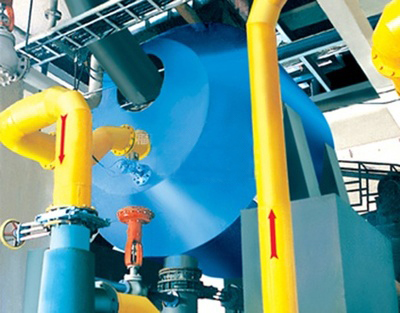Directions of accepts outlet and rejects discharge are perpendicular and independent from each other. Thanks to the structure of rotor and screen plate, screen holes are prevented from plugging by sand and impurities, therefore the hydrapulper keeps running and discharging rejects continually without plugging.

| Model | Capacity (t/24h) | Effective Volume (m3) | Rotor Diamete (mm) | Rotor Type | Stock Consistency (%) | Motor Power (kw) |
| ZDS15 | 10-15 | 1 | ф400 | 3-5 | 18.5 | |
| ZDS16 | 20-25 | 2.5 | ф500 | P.S.Vokes | 3-5 | 45 |
| ZDS17 | 40-50 | 5 | ф700 | 3-5 | 75 | |
| ZDS18 | 60-70 | 10 | ф850 | 3-5 | 110 | |
| ZDS20 | 90-100 | 20 | ф1000 | 3-5 | 200 | |
| ZDS61 | 110-125 | 25 | ф1300 | 3-5 | 250 | |
| ZDS62 | 135-150 | 30 | ф1500 | 3-5 | 280 | |
| ZDS63 | 180-200 | 40 | ф1700 | 3-5 | 355 | |
| ZDS64 | 220-250 | 50 | ф1950 | 3-5 | 400 |
Application:
Drum Pulper is mainly used in the continuous pulping and coarse screening of all kinds of OCC waste paper, continuous defibering and deinking of newspaper, book paper, magazine paper, mixed office waste paper, eliminating the light and heavy impurities, stencil and gooey.
Features:
1.It can save energy, for the power consumption of the drum pulper is as low as 14~18KWh per ton of pulp.
2.Soft pulping and screening will not destroy impurities and gooey. Quality of accepts is clean, while gooey content is low.
3.It is not powerful pulping, so there is little wear and tear, which brings little maintenance costs.
4.DIP waste paper deinking consistency is 18-20% higher, which can save chemicals about 15-20%.
5.The control is simple, while PLC automatic control can be used.
6.There are 3 types of drum pulper: A is suitable for OCC waste paper; B is suitable for AOCC waste paper; C is suitable for DIP waste paper deinking.

